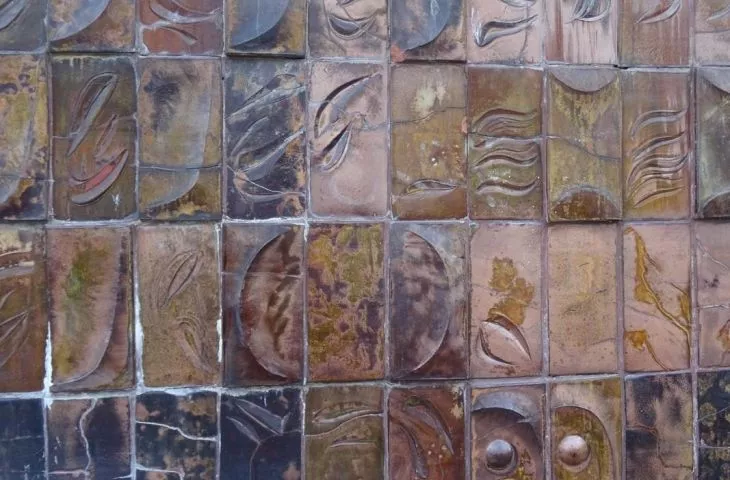Hundreds of passersby pass her every day. Few people, however, know its history. A completely inconspicuous architectural decoration in Warsaw's Mokotow district has been entered in the register of monuments, which will protect it from liquidation during the upcoming renovations of the building's facade. Ceramic composition "Pegasus".
Former International Press and Book Club
I have decided to enter the ceramic composition "Pegasus", by Krzysztof and Julian Henisz and Czesław Wielhorski, located on the facade of the building at 71 Dąbrowskiego Street in Warsaw (former Klub Międzynarodowej Prasy i Książki), into the register of movable monuments of the Mazovia Province, due to the artistic and historical value of the object. - writes Provincial Conservator of Monuments Prof. Jakub Lewicki.
photo. press materials - mwkz.pl
The ceramic cladding consists of ninety-two panels. It is also the only remnant of the decoration of the "Ruch" International Press and Book Club, which was located at 71 Dabrowskiego Street in the 1950s. In 1966, the club's authorities embarked on plans to renovate the premises. The architectural and construction project for the reconstruction of the premises was created by mgr inż. arch. Jerzy Oplustil, meanwhile arch. Zbigniew Wilma. In July 1969 the opening of the club took place. The space was filled with wall decorations designed by renowned visual artists Krzysztof and Julian Henisz and Czesław Wielhorski.
The mythological "Pegasus"
After many renovations and successive new functions of the premises, of all the decorations only the façade, the ceramic composition "Pegasus", survived. The name refers to the repeated motifs carved into the ceramic tiles, which resemble the wings of a pegasus. In the lower right corner of the decoration are preserved the names of the creators, and the imprinted signature of the "Marywil" Ceramic Tile Factory in Suchedniów.
Due to the monochromatic color scheme, the decoration is not conspicuous. The dominant colors are shades of brown with an iridescent glaze. Some of the plates are bas-relief and protrude above the structure of the wall to a thickness of about 5 cm, while some are made in the form of relief composed of deep grooves. The panels are fixed to the base with cement mortar, the joints have been colored in a shade similar to the color of the panels.
The authors of the mosaic are artists Krzysztof and Juliana Henisz and Czeslaw Wielhorski. In the 1960s, this type of decoration was extremely modern and toned down an example of an interdisciplinary approach to architectural design. The abstract wall decoration complemented the interior design of the Press and Book Club, and referred to its idea with its guiding motif of a plastic variation on the mythological Pegasus.
photo: press materials - mwkz.pl
lysogory experiment
The architectural decoration has value not only because of its form, technique or materials used, but also due to the fact that it is the last surviving relic of a set of architectural decorations that made up the furnishings of the headquarters of the International Press and Book Club. - explains Prof. Jakub Lewicki, Ph.D. - The historical value of the composition is also evidenced by the fact that it is the work of artists who are the leading implementers of the so-called "Lysa Góra experiment," using large-format ceramic plates to decorate architectural objects, and thus being one of the most interesting phenomena in applied art in the 1960s (work in this area was carried out between 1959 and 1968 at the cepeli cooperative "Kamionka" in Lysa Góra). Relics of this type of implementation are now unique objects in the architectural landscape of Polish cities, and as such deserve permanent conservation protection.
photo: press materials - mwkz.pl
Placing seemingly ordinary architectural elements under conservation protection often arouses distaste among private investors. The potential renovation of a tenement involves getting project plans to the monument, and often additional costs. For ordinary passersby, nothing will change, they will continue to pass the same brown ceramic facade every day. But conservation care extends life, enforces respect for the history encased in ceramic tiles. Let's just hope they don't face the same future as many other neglected but historic decorations that no one can afford to renovate anymore.









































